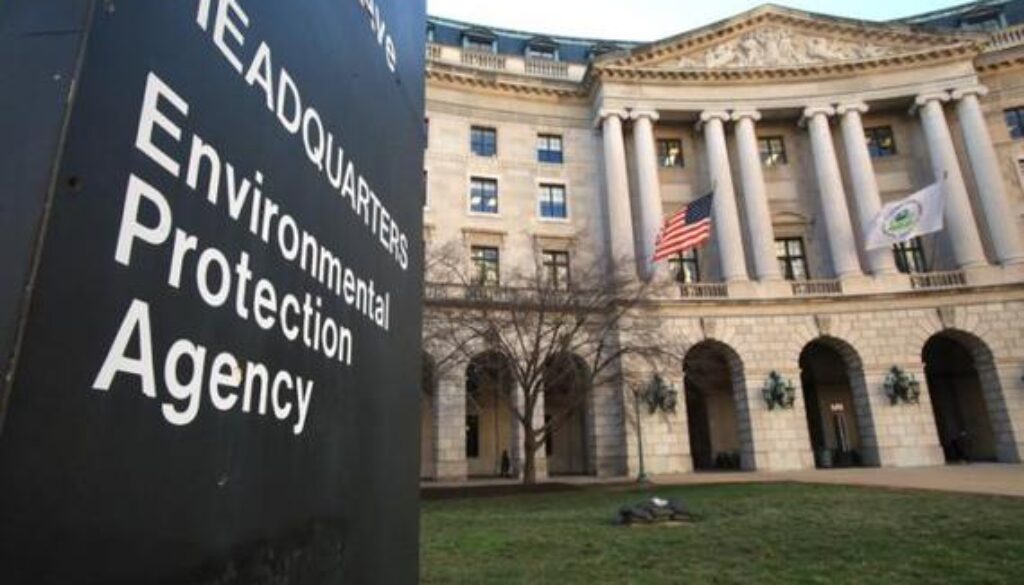EPA’s PFAS plans draw concern in public health circles
Moves by the Trump administration to draw up a new regulatory framework for types of toxic chemicals has sparked suspicion among health advocates who fear the changes will protect polluters but not public health.
The concerns come after US Environmental Protection Agency (EPA) Administrator Lee Zeldin on Monday rolled out preliminary plans to tackle widespread environmental contamination by per-and polyfluoroalkyl substances (PFAS), chemicals used in myriad industries for decades that have been found to pose health threats.
The plans include elements that appear aimed at reversing or weakening policies pursued by the Biden administration, including potentially shielding public water systems from the costs of cleaning certain types of PFAS from public drinking water supplies.
Zeldin said the agency would be “advancing research and testing,” and taking other actions to “ensure Americans have the cleanest air, land and water.”
But Betsy Southerland, a former EPA senior scientist and a former director in the agency’s Office of Water, said the EPA announcement was “nothing but a spin document” that “indicates there are problems ahead, even though it’s written as if it’s just a fabulous plan for the future.”
“Their actions will absolutely ensure that for years longer people will be exposed to PFAS in their drinking water and their food without any relief from this administration,” she said.
A new roadmap?
PFAS are a class of thousands of humanmade so-called “forever chemicals” that can linger for many years in the environment and are used in manufacturing and consumer products including non-stick pans, raincoats and cosmetics.
At least 45% of US tap water is contaminated with PFAS, according to a 2023 US Geological Survey estimate, and about 97% of Americans have the chemicals in their blood. Some PFAS chemicals have been linked to health harms including certain cancers, liver damage, thyroid problems and reproductive issues.
Under Biden, the EPA in 2021 unveiled a “PFAS Strategic Roadmap,” which aimed at putting in place a series of policies to “safeguard public health, protect the environment, and hold polluters accountable.” To support these objectives, the EPA finalized rules that established reporting requirements for companies that manufacture or import PFAS, designated two of the chemicals as hazardous substances under the “Superfund” law, and put limits on six PFAS chemicals in drinking water.
In one of the many contentious elements of the roadmap, the Biden EPA’s drinking water rule required public water systems to complete initial monitoring for PFAS chemicals by 2027 and to implement technologies for reducing PFAS in their water supplies by 2029 if levels exceeded certain limits.
The rule drew strong opposition from public drinking water utilities, which would face substantial costs for implementing new technologies to mitigate PFAS, and penalties for failing to do so. Costs for drinking water systems across the country to meet the rule could exceed $3.8 billion per year, according to an estimate on behalf of the American Water Works Association (AWWA).
The new plan laid out by Zeldin states that the EPA will “address the most significant compliance challenges …. related to national drinking water regulations for certain PFAS,” indicating to some attempting to read between the lines that Zeldin plans to set new rules on PFAS in drinking water.
The rule currently sets a limit of just 4 parts per trillion (ppt) for perfluorooctanoic acid (PFOA) and perfluorooctane sulfonate (PFOS), as well as limits for four other PFAS chemicals.
Zeldin may opt to give water utilities more time to comply with the standards, or he could change the standards so that fewer facilities need to comply, Southerland said.
Indeed, James Ferraro Jr., an attorney who represents water utilities currently suing PFAS manufacturers to try to recover costs related to PFAS contamination, said he thinks public water systems are “cautiously applauding” the announcement, indicating that they believe the Trump administration is looking to shield them from the hefty costs of mitigating PFAS contamination.
The Trump administration had previously signaled changes to the Biden rules may be coming. Earlier this year, the administration asked for and received a 60-day pause on litigation filed by the AWWA and the Association of Metropolitan Water Agencies (AMWA) over the Biden limits on PFAS in drinking water, with an additional 30-day pause granted last month.
In another indication Trump’s EPA is charting its own roadmap on PFAS, the administration appears poised to repeal the designations of PFOS and PFOA as hazardous substances under the “Superfund” law, with the EPA stating that it is “working with Congress and industry to establish a clear liability framework.” The agency earlier received a 60-day pause on litigation filed by the Chamber of Commerce that challenges the Superfund designations.
While it proposes creating guidelines for PFAS releases into waterways, the EPA plan makes no mention of Biden’s draft guidelines for limits on releases by PFAS manufacturers, which were withdrawn shortly after Trump’s inauguration, accompanying an executive order that froze new federal regulations.
A lack of clarity
In another area of concern, the new EPA plan fails to mention limits for landfills, which were originally expected to be proposed later this year.
As well, the EPA’s new proposed plan cites “smartly collecting necessary information” from companies for the Toxic Substances Control Act “without overburdening small business and article importers” in language that suggests Zeldin may act to redo the PFAS reporting requirement rule. The compliance period for the rule finalized under Biden was set to begin this July.
Some of the initiatives announced by the EPA could support efforts to reduce widespread PFAS contamination, including restricting their use and setting limits on PFAS releases into waterways, said John Rumpler, clean water director and senior attorney for the Environment America Research & Policy Center.
But other aspects of the EPA plan, including unspecified adjustments to liability and national drinking water limits, “bear careful attention as they are developed,” said Rumpler.
Calling for “strengthening the science” around PFAS, the EPA announcement implies further work by the EPA’s Office of Research and Development, potentially suggesting that the agency’s research arm may not be eliminated as feared, said Rainer Lohmann, a professor at the University of Rhode Island who directs a PFAS research program. However, it is also possible that the call for more science could simply be a strategy to delay action on PFAS, he said.
For public water utilities, Zeldin’s announcement came as a welcome relief. Along with fears about the cost of implementing the Biden EPA’s PFAS drinking water rule, water utilities also fear being caught in the crossfire of legal battles over PFAS contamination despite EPA’s reassurance that it would not go after passive receivers of PFAS, focusing instead on manufacturers and others using PFAS.
The announcement marks “an important step forward in reducing PFAS pollution,” the National Association of Clean Water Agencies (NACWA) said in a statement. The actions “mirror the stance NACWA has long been advocating – polluters should pay the costs of removing PFAS, not public clean water utilities, which are passive receivers of these chemicals. NACWA looks forward to continued work with EPA in a collaborative manner to address PFAS contamination and ensure clean water for all Americans.”
The EPA said in a statement that new leadership is in the process of reviewing the PFAS drinking water rule “and the issues presented in the litigation in the current case around it, and developing its position on how to proceed.”




